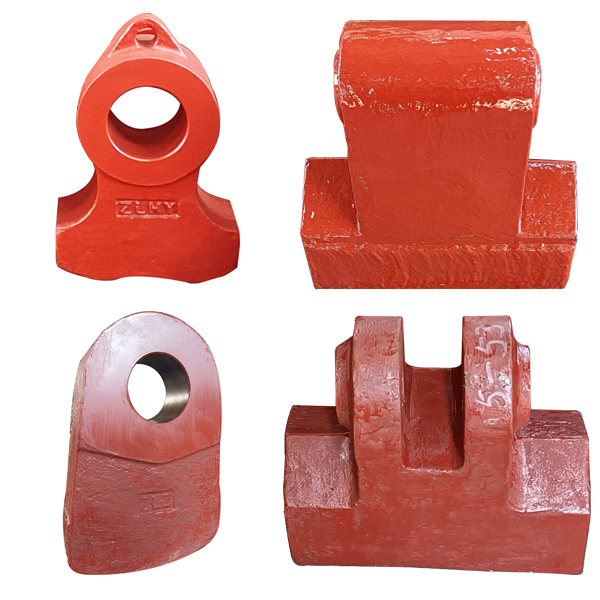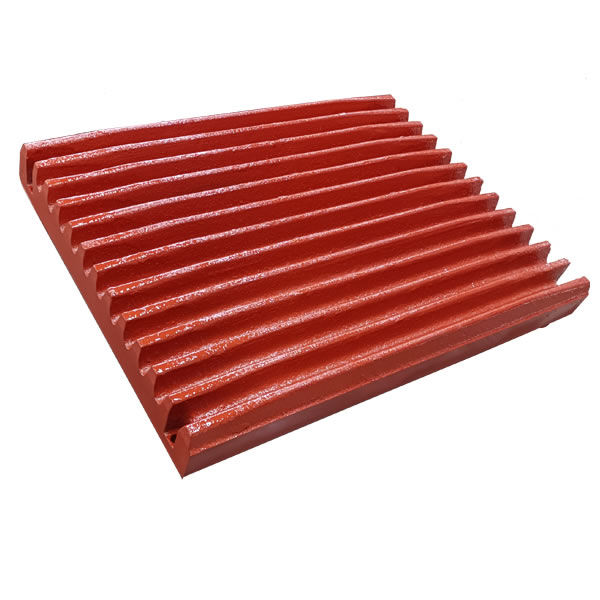Discussion on the function and maintenance of crusher blow bar
- 2025-07-10
- view count’╝Ü
In the ore crushing and construction waste treatment sites, the crusher is the core protagonist. Inside it, there is a type of key component that seems inconspicuous but bears the most severe impact and wear - blow bar It is an invisible guardian that is indispensable for the efficient operation of the crushing production line. With the rapid development of materials and composite technology, blow bars have evolved from a single material to a variety of high-performance forms to cope with more complex working conditions.
Core role: "iron teeth and steel teeth" facing impact
The blow bar is the core vulnerable part of the impact crusher and is directly installed on the high-speed rotating rotor. Its core function is simple but crucial: relying on the huge kinetic energy obtained by high-speed rotation, it violently impacts the material entering the crushing chamber, causing it to collide, squeeze and break.
Harsh challenges: wear, impact and failure
The work of the blow bar can be called a "head-to-head" contest:
High stress impact wear: repeated high-speed collision with hard materials, bearing huge impact force, resulting in continuous chiseling and peeling of surface materials.
Abrasive wear: A large number of sharp particles are generated during the crushing process, which continuously scrape the surface of the blow bar like sandpaper.
Corrosive wear: In the processing of wet materials or materials containing corrosive components, wear and corrosion interact to accelerate material loss.
Fatigue fracture: Long-term exposure to periodic impact loads can easily cause fatigue cracks to initiate and expand at stress concentration sites, leading to fracture failure.
Cast toughness: Evolution and integration of materials and processes
In response to the above challenges, modern blow bars have developed a variety of high-performance material routes and advanced composite technologies from traditional single materials:
1. Basic high-performance materials:
High manganese steel series: Such as ZGMn13, which is known for its ability to produce significant work hardening on the surface under strong impact. It is traditional and reliable with excellent toughness.
Alloy steel series: Such as 40CrMnMo, etc., which achieve a balance between high strength and good toughness through quenching and tempering.
High chromium cast iron: Such as Cr26, etc., with extremely high hardness and excellent wear resistance, suitable for highly abrasive materials.
2. Pioneer of composite technology:
High manganese steel insert alloy bars: High hardness titanium carbide alloy rod is cast and embedded on the high manganese steel matrix with excellent toughness. It is both hard and soft, the high manganese steel matrix is impact-resistant, and the titanium carbide rod provides local ultra-high wear resistance. Applicable: Medium and high impact hard rock (granite, basalt, iron ore), high rotor linear speed occasions.
Crusher blow bar produced by our company
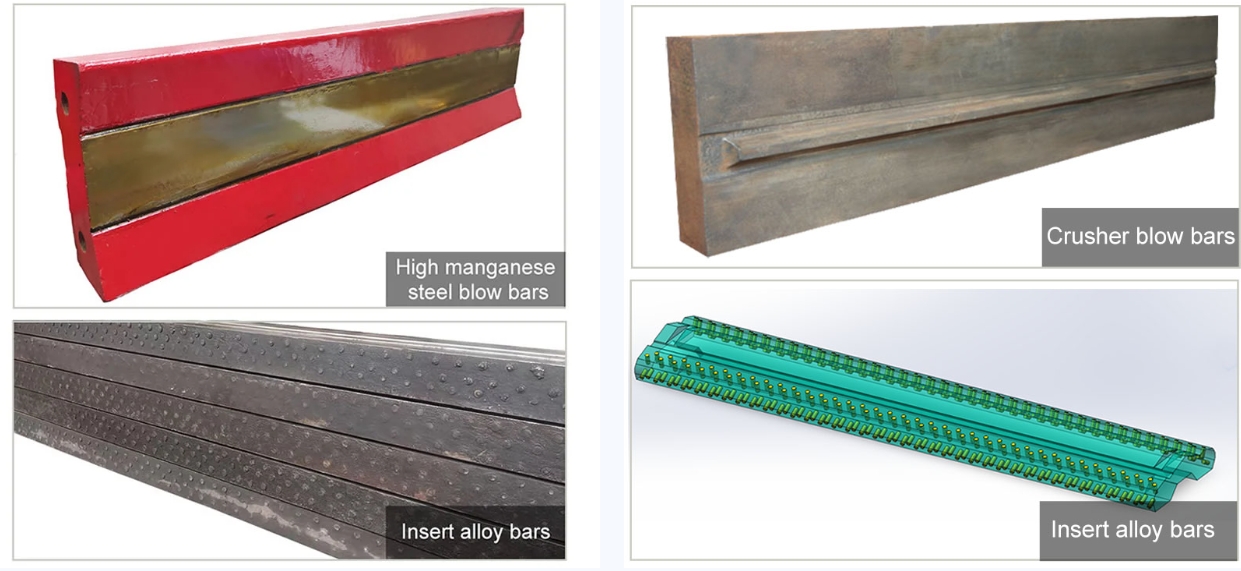
insert alloy bars + hardfacing: On the basis of insert alloy bars, the wear-resistant welding layer is hardfacing on the easily worn surface of the blow bar. Advantages: Double protection, wear resistance leap, life is increased by 30%-50% compared with simple inlay. Applicable: Ultra-high abrasion + medium impact materials, wet sticky materials, and continuous production lines that pursue the longest single life.
insert alloy bars + hardfacing blow bar produced by our company
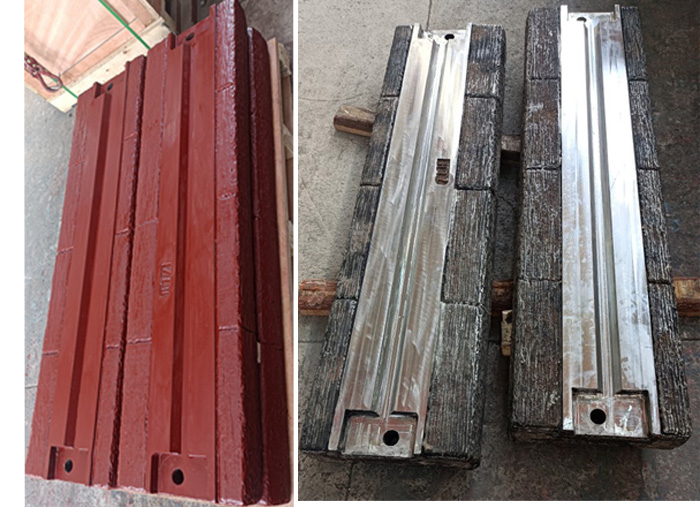
Ceramic composite blow bar: extremely wear-resistant, corrosion-resistant, and lightweight. Applicable: Strictly limited to low impact, ultra-high abrasion, small particle size conditions and corrosive environments.
Ceramic composite blow bar produced by our company
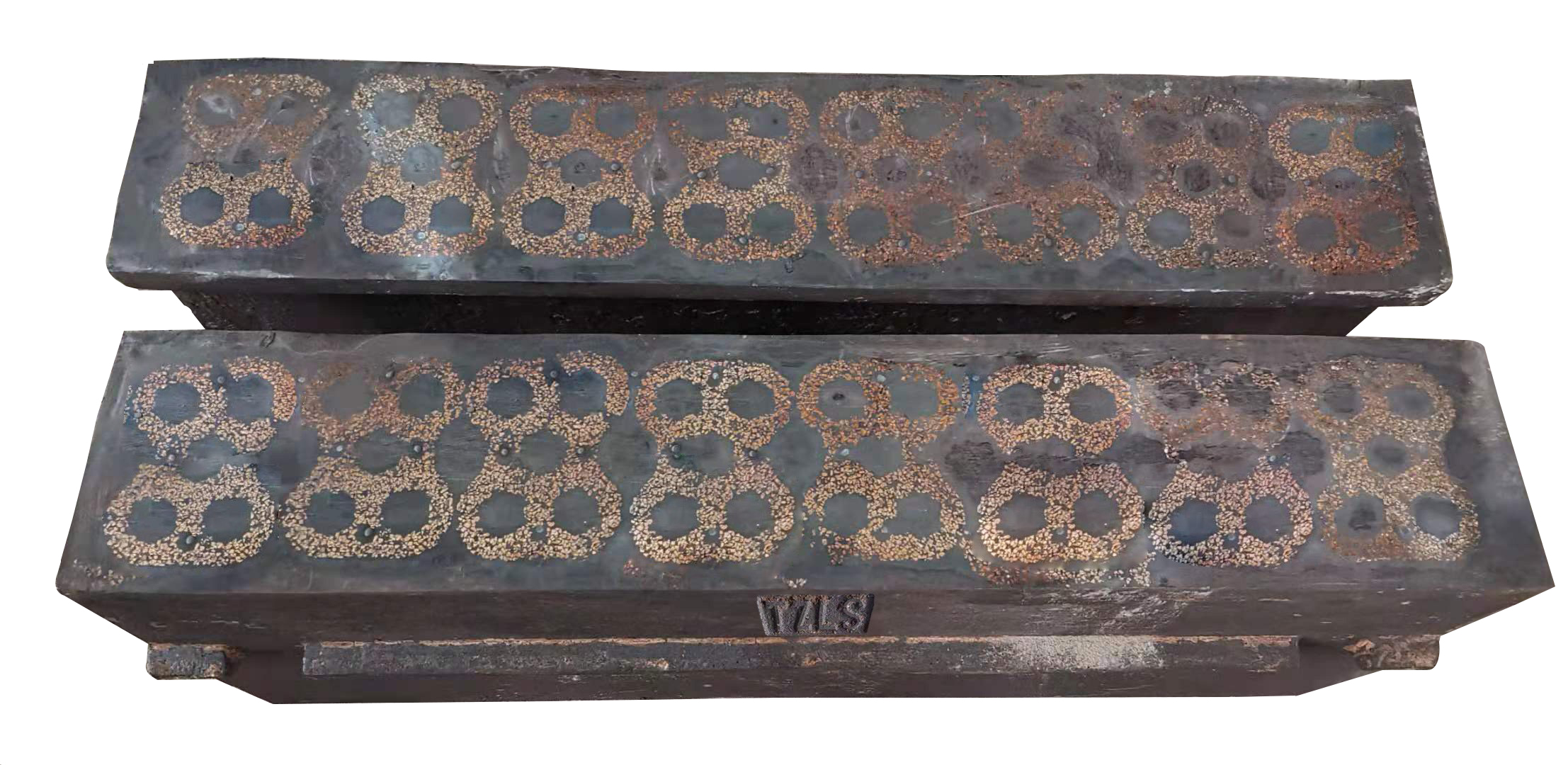
3.Manufacturing cornerstone: Advanced casting technology and heat treatment process (quenching + tempering) are the key to ensure the compactness of the internal structure of the blow bar and the performance meets the standard.
Smart use: selection, maintenance and replacement
Accurate selection is the core:
Basic material selection: Select materials according to material hardness, abrasiveness, feed particle size and crusher model.
Composite technology upgrade:
Medium and high impact hard rock: high manganese steel insert alloy bars
Ultra-high abrasion + medium impact/wet sticky material: insert alloy bars + hardfacing
Low impact, ultra-high abrasion, small particle size/corrosive environment: ceramic composite (impact risk needs to be strictly evaluated)
Replacement in pairs/groups: When replacing, be sure to ensure that all blow bars in the same row or symmetrical position of the rotor are of the same weight to avoid destroying the dynamic balance of the rotor and causing severe vibration to damage the equipment.
Timely replacement: When the blow bar wear reaches 20%-30% of the original length or serious cracks appear, it must be replaced in time. Excessive wear will greatly reduce the crushing efficiency, increase energy consumption, and even damage the rotor body.
Standard operation: Prevent metal foreign matter from entering; ensure uniform feeding to prevent eccentric wear.
Regular inspection and maintenance: Establish an inspection system, focusing on wear, cracks, tightening status and rotor vibration.
Although the blow bar is inside the crusher, it has always been the pioneer in crushing hard challenges. From traditional high manganese steel to high chromium cast iron, to the inlay composite and point-surface protection hardfacing enhancement that combines rigidity and flexibility, and even the pursuit of extremely wear-resistant ceramic solutions, the evolution of blow bar technology is a history of fighting against wear and impact. Understanding its core role, harsh working conditions, diverse material routes and composite technology secrets, and scientific maintenance points are the key to ensuring efficient and stable operation of equipment and controlling production costs.

